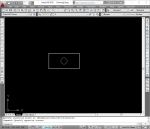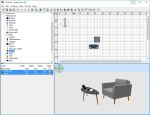- Home
- computer software
- Basic Computer Troubleshooting
Basic computer troubleshooting
Basic computer troubleshooting involves diagnosing, identifying and solving computer systems problems. Like any electronics equipment, a computer may stop working or unable to start at all because of several reasons. The reasons could be either software or hardware failure or both.
The good thing is that every PC problem has a solution. You can solve it if you follow computer troubleshooting techniques.
In this article, we will discuss about the tools and the knowledge we need to have in order to troubleshoot a computer. Actually, you do not have to be a ‘techie’ person to troubleshoot your own computer. Understanding the basics of how computer parts work together, simple logical analysis method, common sense, knowing basic computer troubleshooting tips and handy tools are all you need to repair a computer.
Steps in Basic computer troubleshooting
Step one
Determine the area of the problem
Before going to the repairing process, you should identify and isolate the type of difficulty your PC encountered. This is the first step in basic computer troubleshooting.
Generally, computer problems fall into two main areas: hardware and software. Your computer fails to work due to hardware or software failure.
Is it hardware or software problem or combination? You must answer this question, because the troubleshooting methods and tools you implement for both breakdowns are different.
Hardware problem
Hardware problem occurs when one of the key parts of a computer is unable to work properly. The key components of a computer that are required to run a computer include Motherboard, CPU, Memory, Power unit, Hard Drive, Sound and Video Cards, CD/DVD Drive (optional), Floppy Drive (optional), Monitor, and Keyboard. Among these computer parts, the most failure-prone parts are memory, power unit, hard drive, video card and CD/DVD drive.
Software problem
Other than hardware defect, a computer may stop working because of software problem as well. In fact, most of the problems of a computer come due to software problem and system configurations. Software includes both the operating system and application programs.
A problem related with operating system may stop the entire system, in this case you should repair it using boot disk or reinstall from scratch. Whereas the fault caused by application program can be corrected by using software repair programs such as registry cleaner or reinstalling it again.
Some of the reasons for software problems include
- Corrupted or missing system files
- Virus attack
- Invalid hardware or incompatible driver
- Corrupted registry
- Improper program installation/removal
Step two
Troubleshooting the problem
The second step in basic computer troubleshooting is dealing with the identified problem. How are you going to solve the problem? What do you need to resolve it? To come down to the best solution, you must ask these kinds of questions and answer accordingly.
Hardware troubleshooting
If it is a hardware problem, you either repair or replace it with new one. Actually, not all parts of a computer are repairable. Even if it is maintainable, in most cases replacing the defective part with a new one is cheaper than repair it.
There are a number of ways to identify malfunction hardware; the most common methods are using POST (Power-on-self Test), bootstrap and diagnosing application. For example, Dell computer comes with Diagnostics CD, so that you can easily boot your system from the CD and identify which component is defective.
The POST tests the basic functioning components of a computer – CPU, Memory, Hard drive, keyboard and display controller. The results of the tests are displayed on your computer screen and tells which hardware part has a failure or is not configured properly.
In fact, some of the methods mentioned above are only applicable for if the system is not dead.If it is a dead system, you will be forced to test individual parts by using other similar working system unit (swapping method). You also use bootstrap method.
Most of the time, the causes of a dead system is malfunction power supply unit. So, make sure that the power supply is working properly before going to test other components. This is very important when you perform basic computer troubleshooting.
Software troubleshooting
Reinstalling and updating software is the primary way of troubleshooting systems problem created by software. Any system error or corruption related with installed applications can be fixed by installing an updated and fresh copy again.
On the other hand, if it is windows boot problem, there are a few way outs. Depending on the defect type, you can repair it using boot disk, update/fix Master boot record (MBR), use Safe Mode or reinstall it again from scratch (this is your last option to do). Rebooting your PC to Safe Mode enables you to remove or repair particular type of program responsible for system breakdown.
Using the best registry cleaner will also help a lot in resolving problems that arise because of missing DLL and freezes.
Conclusion
In one way or another, you use computer to carry out your daily task. However, in any time, your PC may stop working and disappoint you. However, if you know the basic computer troubleshooting methods well, you will surely fix the problem and continue your work. Also, you will cut PC repair cost by half.
Hope this article gave you some insights about computer troubleshooting.


